I am continuing to make progress on the programme for the Medieval Canterbury Weekend 2020 that will take place from Friday 3 to Sunday 5 April. All being well, work on the website will take place during September and I’m hoping we will be able to go live online in early October. I’ll let you know when that happens.
Among the speakers we’ll be welcoming for the first time is Dr Chris King (University of Nottingham) who will explore houses from across the social spectrum – from wealthy merchants to artisans and poor widows – to offer new insights about how people lived and worked in medieval towns. Another new speaker at Canterbury is Professor Diarmaid MacCulloch (St Cross College, Oxford) who couldn’t be with us last time and in 2020 will be considering Thomas Cromwell’s early career and Cardinal Wolsey’s part in shaping the young Thomas; while Dr Sophie Ambler (University of Lancaster) will look at the life of Simon de Montfort, remembered for the early development of the English Parliament and his shocking death at the Battle of Evesham.
We are welcoming back a few speakers from 2018 and these will include Professor Caroline Barron (Royal Holloway, University of London) who will be investigating Thomas Becket’s London connections and Dr Marc Morris who will examine why 1066 is the most famous date in English history and why the events of that year really matter so much. Also returning is Professor Paul Bennett (CAT) who will again lead guided tours of two iconic medieval buildings and Cressida Williams will be providing her special tours of the medieval archives at Canterbury Cathedral.
Hopefully these will be of interest to readers and those attending the Weekend will again be able to buy books at the CCCU bookstall which speakers will be happy to sign. However, for the remainder of this week’s blog I’m going to move into a later period of Canterbury’s history, although it was using a system from the Middle Ages!
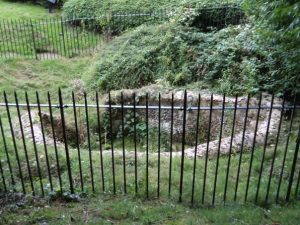
St Augustine’s conduit house
Water has been in the news recently, either a case of too much or not enough, and just how precious a resource it is now and will be even more in the future. In some ways this is not an entirely new situation because in early 18th-century Canterbury the supply from the old St Augustine’s Abbey system was seen by the civic authorities as insufficient. Like Christ Church Priory, the abbey had also had its own system but unlike Wibert’s fantastic waterworks plan nothing comparable has survived for St Augustine’s. Nonetheless, the city may have utilised the old abbey’s supply some 100 years or so earlier when in 1620 Archbishop George Abbot paid for a conduit to be erected on the site of the old fish shambles behind St Andrew’s church (in the middle of The Parade), with water for it being brought in earthen pipes from the abbey’s old reservoir. If you want to find out more about Archbishop Abbot’s Conduit and relations between him and the city, do read Anne Le Baigue and Avril Leach’s article in Archaeologia Cantiana, vol. 139 (2018).
Unfortunately, due to a dispute with the city, the water supply was not endowed and the water from the conduit began to run out. In 1649, a new conduit head was built just south-east of St Martin’s Church in an area called the Conduit Meadow, and now called ‘The Glebe’. More work was required, however, and four years later the civic authorities spent £24 16s5d on digging a new well and laying new pipes. This development was apparently adequate for the remainder of the 17th century because there was no further capital expenditure, only various repairs to the waterworks, and small jobs, like the repair of a fence adjacent to the pond at St Martin’s hill in 1703.
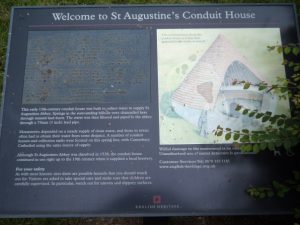
A valuable reminder of this important medieval structure
Yet, thereafter the problem became more pressing, which prompted the civic authorities to search for further springs at St Martin’s hill and to enlarge the water pipes from there to the city. In the short term this seems to have been successful, but almost a decade later, in 1715, the city officers had to negotiate with Mr Evans, on whose property was sited part of the waterworks, about the opening, cleaning and repairing of the pipes, vaults and springs there. It may be worth noting at this point that the city waterworks at St Martin’s hill were located on two adjacent properties: part was in the corner of the yard belonging to a mansion now called St Martin’s Priory (part of CCCU), and in private hands; while the other works were on property the city had acquired in 1678. The city’s holding comprised a house and malthouse, with a garden that the chamberlains leased separately at £12 per annum and 1s per annum respectively (for example, in 1731-2 the larger property was held by John Norwood and John Austen, with Austen also holding the garden, and in the following year he had both properties. The terms of the 99-year lease secured by the city authorities in 1674 for the waterworks at the mansion were that after paying an initial fee of £15 to the then owner James Smith, they would pay, an addition, a yearly rent of 13s4d. It is difficult to know whether the work carried out at Mr Evan’s mansion in 1715 was sufficient to maintain an adequate supply, but it seems unlikely because in the following year Mr Hougham offered the water from the springs on his land to the city.
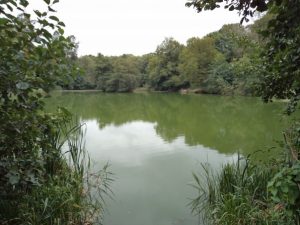
The pond that supplied the St Augustine’s conduit house
This was presumably useful, but it did not provide a complete solution, and, in October 1722, the mayor and aldermen were again seeking greater supplies through the sinking of a well on the city’s lands at St Martin’s hill. It was a costly undertaking, the chamberlains paying William Vittell, a bricklayer, a total of £23 17s6d for materials and labour, William French received £25 9s6d for materials and his work as a plumber, Alderman Bullock was paid £8 15s1d, Mr Snowlton, for paving tiles, received £1 16s, and Mr Evans was compensated for the disruption with a gift of £1 5s. In 1723-4, the chamberlains paid an additional £6 14s8d to Mr Thomas Francis for building materials and £1 9s8d the following year to Mr Pembrook for weir gates for the conduit; and possibly as a way of aiding the city’s finances regarding the conduit and waterworks, the mayor and aldermen leased the “wast” water of the conduit in 1726 to Mr Raldulph Ludd, a brewer, who for 20s a year was allowed to pipe this water from the conduit to his brewhouse in the city.
Such measures to secure the supply only provided a temporary respite and a system of rationing the city’s water supply was introduced in April 1725. The method employed was based on the depth of the water in the cistern of the conduit, which meant that if it dropped below a certain point the flow of water would be stopped. William Williams was employed by the city to look after the system, receiving 10s a year after an initial payment of 20s in 1725. Williams was given even more precise instructions in 1728 when he was not to allow the water to drop below five feet in depth which seems to suggest the civic authorities were experiencing even greater problems. It is not clear how they were intending to respond but in 1731 they were apparently sufficiently desperate to try something new. The Burghmote minutes do not say what Mr David Neame’s experiment was “touching his bringing water for the service of the inhabitants of this City doing no damage to the pipes and grounds belonging to the said City” but he was allowed to try it. Nothing more was recorded in the minutes which suggests the project was not a great success.
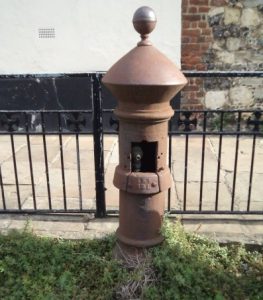
The old pump by the inscription about Sir John’s gift
Consequently, in 1732, the civic authorities were delighted when Sir John Hales offered the water from his lands, part of the former property of St Augustine’s Abbey, to the city and the provision of lead pipes to bring the water to the city’s conduit. In response the mayor offered him the freedom of the city and this was to be presented to him in a silver box double gilt on which were engraved the arms of Canterbury city, a gift that cost the authorities 10 guineas for the box and 5s for the document itself. Interestingly, this privileged status was only conferred on Sir John, not his offspring which may relate to the special nature of the event, but also that Sir John and other members of the family had been and, in some cases, continued to be active Catholics. Of even greater interest is his refusal to receive this municipal gift, yet the corporation seems to have entertained the hope that he might eventually relent because the box was to be held by the current mayor until Sir John agreed to accept it. He is said to have become a recluse during his later years, he died in 1744, but it is not clear when he withdrew from society, although the death of his eldest son by his first marriage in the debtors’ prison at the Westgate in 1729 (Sir John had withheld his allowance and refused to pay his debts) may have been a contributory factor.
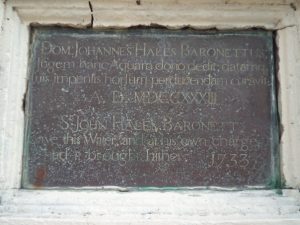
The inscription commemorating Sir John’s gift
The city fathers, however, found other ways of celebrating this event and the bell ringers of Canterbury Cathedral were paid a guinea to ring the bells. Presumably on the same day the mayor, aldermen and members of the common council met at the Red Lyon, the tavern leased by Sir John from the city and the usual place of refreshment for the civic authorities, to toast the health of their benefactor in wine and other spirits. The populace was included in the celebrations, receiving beer at the hands of the city constables, a gift which had been provided for them by Sir John. He also provided the authorities with a present to mark the event, a buck which they may similarly have consumed at the Red Lyon. In addition, the authorities decided to record Sir John’s generosity for posterity and the resulting plaque in English and Latin that documents the event is still in the wall at the corner of Longport. The city conduit was cleaned and painted at the same time, thereby signifying the importance of the occasion and the role of the city officers as guardians of the wellbeing of the citizens. Probably the last public expression of the corporation’s gratitude for the extra water took place in 1746 at the time of Sir Edward Hales’ (Sir John’s grandson) wedding. On this occasion candles were used to illuminate the conduit and together these and other expenses cost the chamberlains £1 9s6d.
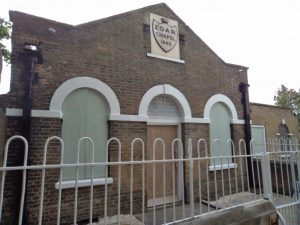
The recently sold Zoar Chapel
The provision of this supply, when added to the city’s own sources, may have been sufficient to meet the demands of the citizens for some considerable time because the only expenses relating to the conduit and waterworks in the late 1730s and 1740s, apart from the annual rent of 13s4d and the salary of Williams and his successors, were for relatively small sums. Presumably these were for repairs rather than capital expenditure, although the chamberlains did organise the painting and repair of the conduit in St Andrew’s parish in 1742 and five years later John Davison was paid the considerable sum of £14 13s8d for other work. The next major development occurred in 1754, when Archbishop Abbot’s conduit in the Parade was taken down and new cisterns were built in the tops of the St George’s Gate towers. In the following decade it appears the corporation instigated further changes to the water supply when they ordered new conduits and pipes that were not to be connected to the St Augustine’s system. Nonetheless, the 19th-century refurbishment of the St Augustine’s Conduit House would suggest that the water from there was still part of the city’s supply, especially as it seems likely this took place soon after the building of a new cistern in one of the city wall towers (the towers of St George’s Gate having been demolished in 1801). This cistern was finally removed in 1845, when the tower in which it was sited became the Zoar Chapel, an interesting building that has recently been sold and looks now to be in private hands.
 Centre for Kent History and Heritage
Centre for Kent History and Heritage Sheila Sweetinburgh
Sheila Sweetinburgh 2487
2487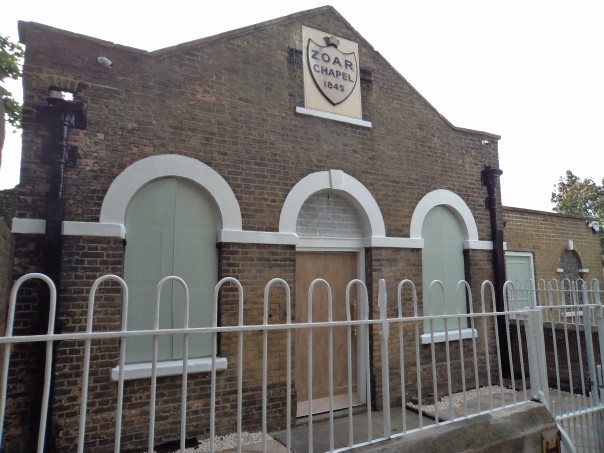



Hurrah! In the end I got a weblog from where I know
how to actually get useful information regarding my study and knowledge.
Hello Marcella, I delighted that you found it useful.
Also in response to Bob Richards, certainly, feel free to link any of these to your Facebook page if you find them interesting.
Sheila
Thank you for this Sheila, which I just ran across when looking for dates for 2020. Not sure where you are with the programme, but Suzannah Lipscombe on the women of anime’s might be a very interesting addition.